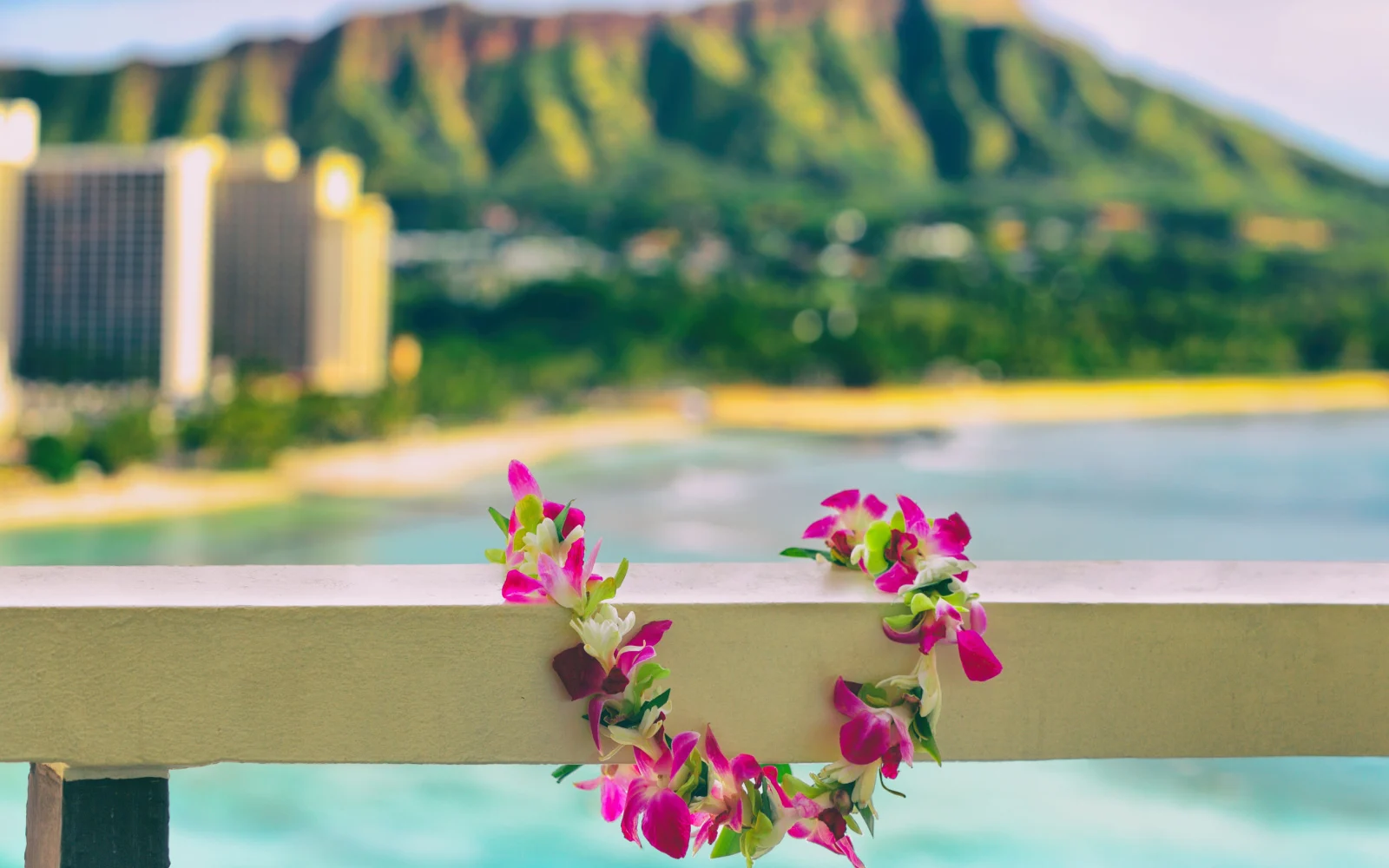What language do they speak in Hawaii?
Hawaii has two official languages, English and Hawaiian, with English being the most commonly spoken. Hawaiian Pidgin, Tagalog, Ilocano, Japanese, Spanish, and Hawaiian are also spoken in the state. The Hawaiian language has seen a resurgence in popularity despite historical bans.
What language do they speak in Hawaii? With 2 official languages and over 130 languages spoken in the state, let’s take a look at the most widely spoken tongues in Hawaii. First, we’ll explore the different Hawaiian languages and the number of people in the islands that speak a language other than English.
Then, we’ll show you the top 7 languages in Hawaii and how they became so entwined in the state’s diverse heritage and the creation of a unique and recognizable Creole language. Ready to get started? Uhaele aku kākou! (let’s go)!
What Are the Hawaiian Languages?
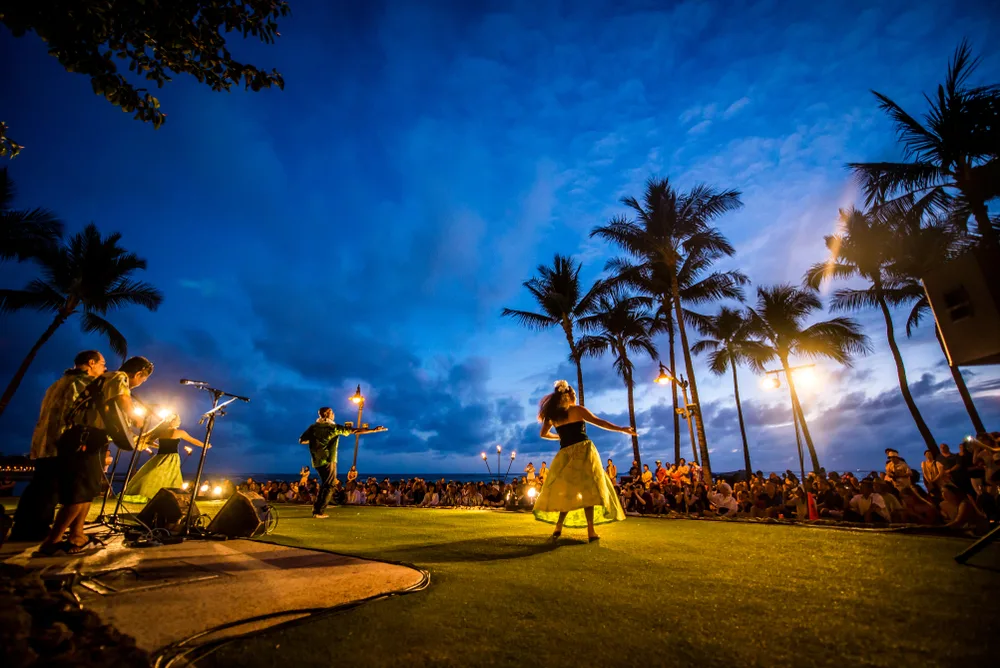
Surat Kulapatana/Shutterstock
- Hawaii has 2 official languages: English and Hawaiian
- English, Hawaiian Pidgin, and Tagalog are the most widely spoken
- Over 130 languages are spoken in Hawaii
As the only U.S. state that’s not physically connected to North America, the lush, tropical archipelago of Hawaii stands apart as unique and exotic.
Lying in the middle of the Pacific Ocean nearly 1,860 miles from the nearest continent, the Hawaiian islands have a long history and culture separate from the rest of the United States. And language is part of what makes Hawaii delightfully different.
As the most diverse state in the United States (75%+ belong to a minority group), there are many languages spoken in Hawaii, from English and Tagalog to Hawaiian and Spanish.
About a quarter (25.4%) of Hawaiians speak a language other than English at home. Hawaii is one of only 2 U.S. states (along with Alaska) that has 2 or more official languages. Hawaii’s 2 official languages are English and Hawaiian.
The Hawaiian language has been officially recognized in the state since 1978, but it’s not nearly as commonly spoken as English, Hawaiian Pidgin, Tagalog, Ilocano, Japanese, and Spanish here.
Past statistics from the Hawaii State Data Center found that only around 5.7% (roughly 18,600) people speak the Hawaiian language throughout the state.
But just because Hawaiian isn’t the most common tongue in Hawaii doesn’t mean it’s not a huge part of the culture and “brand” of the state.
From the moment visitors arrive in the Hawaiian islands, they’re greeted with “Aloha.” “Mahalo” is used often in lieu of “thank you,” and most people know that “Ohana” means “family.”
Other Hawaiian words that many people recognize and understand include poke (diced raw fish), lei (strung flower necklace), luau (traditional feast), and hula (traditional dance).
There are many more languages spoken in Hawaii than just English and Hawaiian – in fact, data shows there are around 130+ languages spoken in the state! The Hawaiian Pidgin or Hawaiian Creole language is unofficial, but nearly as widely spoken as English in the state.
What Language Do They Speak in Hawaii?
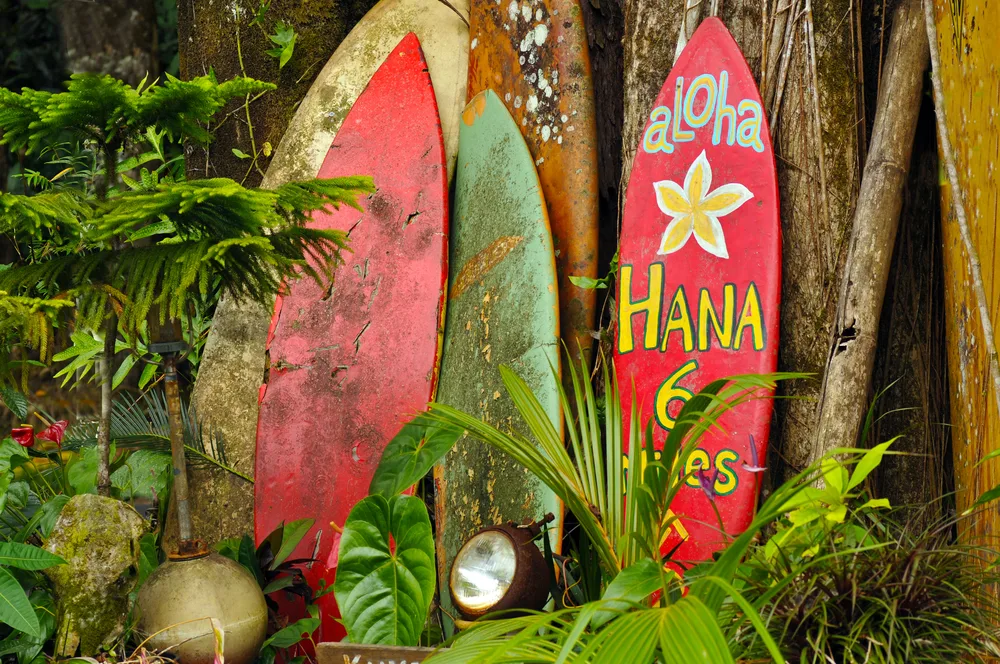
Mike Brake/Shutterstock
There are at least 130 languages spoken in Hawaii, but if you include Micronesian and Pacific Island languages that aren’t officially recognized by the Census Bureau, there are even more languages spoken here.
Data shows that the most common languages spoken in Hawaii are as follows:
- English (1,127,000+ speakers)
- Hawaiian Pidgin (1,000,000+ speakers)
- Tagalog (58,300+ speakers)
- Ilocano (54,000+ speakers)
- Japanese (45,600+ speakers)
- Spanish (25,500+ speakers)
- Hawaiian (18,600+ speakers)
That’s right – English and Hawaiian Pidgin are the most widely spoken languages in Hawaii, closely followed by the Filipino languages of Tagalog and Ilocano, then Japanese and Spanish.
Surprisingly, the native Hawaiian language is 7th on the list of languages spoken in Hawaii – but how can that be? Let’s take a closer look at each of the most common languages they speak in Hawaii next.
We’ll share some interesting facts and how each of these tongues have waxed and waned in the state over the years and how immigration has led to Hawaii’s diverse language list.
1. English
English is the most widely spoken language in Hawaii and one of 2 official languages in the state. Most Hawaiians speak English fluently or very well.
Only about 12.4% of the Hawaiian population report speaking English “less than very well” in the most recent census.
Even so, almost every Hawaiian speaks at least some English. Early Protestant missionaries came to Hawaii in the 19th century, teaching the English language to natives who spoke Hawaiian.
A form of Hawaiian Pidgin came about, blending English and Hawaiian words together in a mutually intelligible language. The United States first annexed Hawaii in 1898 and claimed Hawaii as a U.S. territory in 1900.
At this point, the English language was widely introduced with Hawaiians encouraged to assimilate with American culture and adopt the language in all official areas.
The major tourism industry that has been booming for years in Hawaii also encouraged Hawaiians to speak English, as most of the state’s visitors arrive from the contiguous United States.
Combine that with the historic ban of the Hawaiian language and subsequent “replacement” with English as the official language for decades, and you can see why English is so widely spoken in Hawaii.
2. Hawaiian Pidgin/Hawaiian Creole
While it’s not an officially recognized language, most of the people in Hawaii speak Hawaiian Pidgin (also called Hawaiian Creole) as their native or second language.
This “melting pot” patois features blended, easily-understood elements of Hawaiian, English, Portuguese, Japanese, Ilocano, and Cantonese.
Since Pacific Islanders throughout the region spoke slightly different forms of the Polynesian language and other languages became more common, there was a need for a new creole blended language.
Hawaiian Pidgin, or Hawaiian Creole, emerged as that simplified, blended language in Hawaii and is still spoken in the state today by around 1 million people natively and as a second language.
With a high degree of “mutual intelligibility,” even non-native speakers can understand some Hawaiian Pidgin words. Hawaiian Pidgin is widely used among Hawaiians and in advertising on the islands.
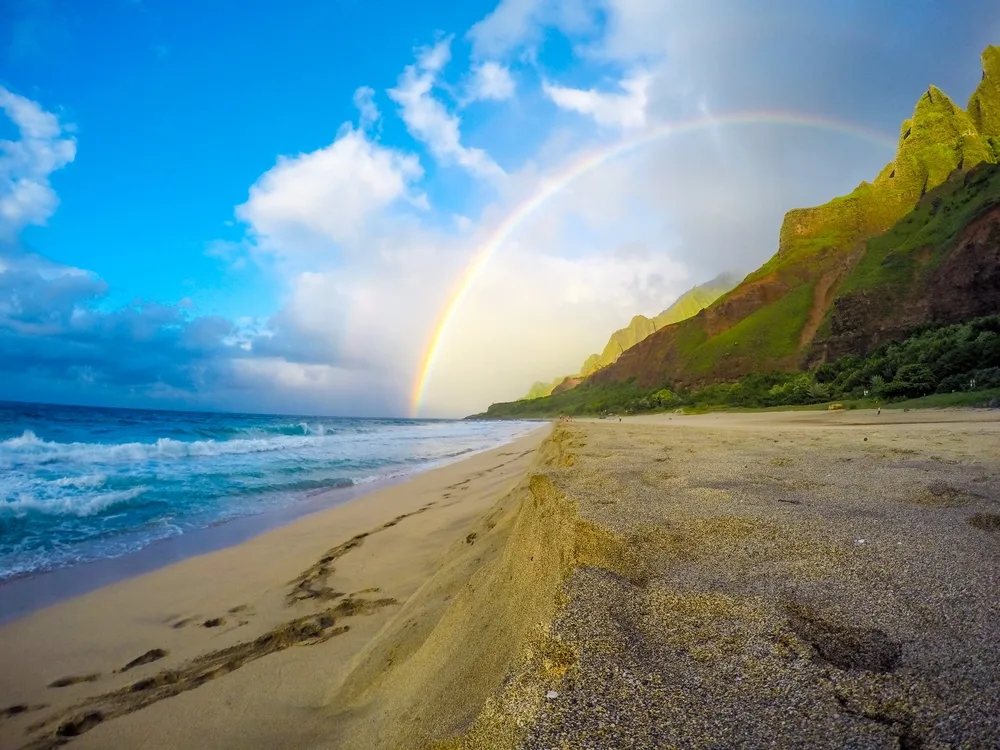
Philip Jaeger/Shutterstock
3. Tagalog
Tagalog, the Filipino language, is widely spoken throughout Hawaii due to the large Filipino community living on the islands. About 17.8% of Hawaiians speak Tagalog.
With nearly 60,000 Tagalog speakers in Hawaii at the last census, this is a language you’re likely to hear if you visit Hawaii. Tagalog comes from the Manila region of the Philippines’ main island, Luzon. It’s one of the most commonly spoken languages there and in Hawaii.
Filipino contract workers first came to Hawaii in the early 1900s to work on the sugar plantations. From there, their numbers grew exponentially as more workers arrived and people began developing roots in the Hawaiian islands.
Tagalog is most commonly spoken in Honolulu County on Oahu with over 45,000 speakers here.
You’re much less likely to hear people speaking Filipino Tagalog in Maui County (about 6,120 speakers) and Hawaii County on the Big Island (about 4,390 speakers).
4. Ilocano
Tagalog isn’t the only Filipino language commonly spoken in Hawaii. Ilocano is the 4th most spoken language in Hawaii overall and about 16.5% of Hawaiians speak it.
The arrival of Filipino migrants to the Hawaiian islands around 1906 for sugar plantation work meant Ilocano, another Filipino language, began spreading throughout the archipelago.
Most of the migrants who came to Hawaii to work on the sugar plantations were Ilocano, hailing from the northwestern region of Luzon in the Philippines.
The influx of Filipino workers over the start of the 20th century along with a growing native population of 2nd-generation Filipino-Hawaiians resulted in explosive growth of the Ilocano language in Hawaii.
While Tagalog is spoken by nearly 60,000 people in Hawaii, Ilocano isn’t far behind with around 54,000 speakers throughout the archipelago.
Most Ilocano speakers in Hawaii are in Honolulu County on Oahu (about 36,275 speakers). Fewer people speak Ilocano on the Big Island (about 4,500) and Maui (about 8,600).
5. Japanese
Japanese is another widely spoken language in Hawaii with around 45,600 people speaking the language in Hawaii overall (about 14% of the Hawaiian population).
Shipwrecked Japanese immigrants and contract farm laborers first arrived in Hawaii in the early 19th century. Working on sugar plantations, these immigrants kept their Japanese heritage and culture alive for decades.
Second- and third-generation Japanese immigrants in Hawaii learned Japanese as their primary language and even attended Japanese schools with newspapers printed in their native language.
People from Japan continually came to Hawaii for employment opportunities over the years, with some returning to Japan and others making Hawaii their home. Japanese people accounted for the largest ethnic group in Hawaii at one point.
But the effects of World War II were apparent in the declining use of the Japanese language in Hawaii and Japanese immigrants in the contiguous United States.
Fewer people used the Japanese language in public and private as Japanese immigrants in Hawaii tried to show American allegiance during the war and adopted English or Hawaiian Creole as their spoken language.
Still, the Japanese language remains commonly used in Hawaii today, though less common than in the past. Most Japanese speakers here are in Oahu’s Honolulu County (about 38,500).
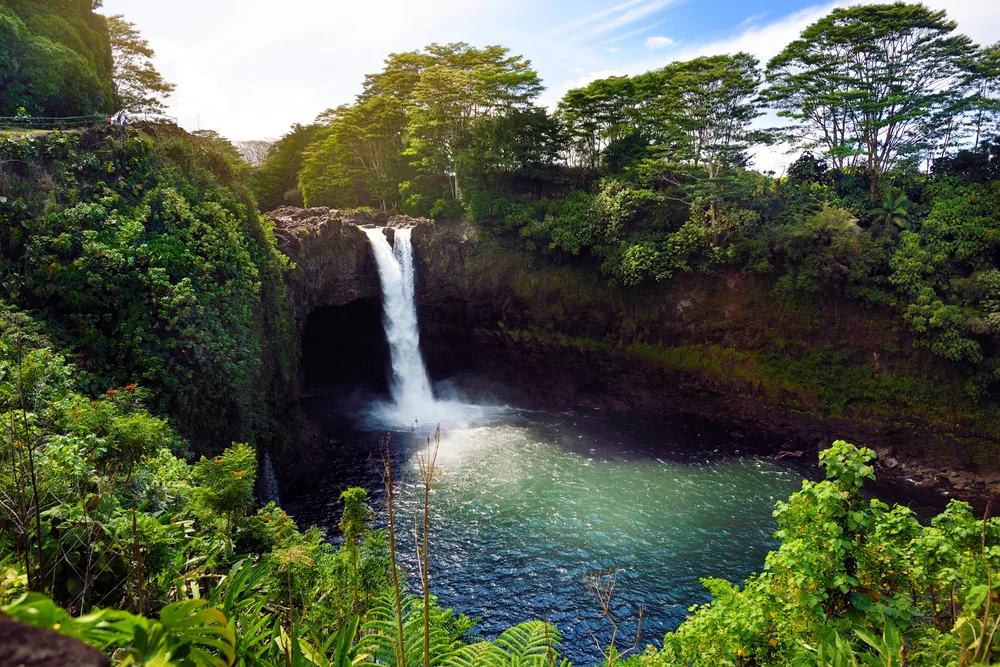
MNStudio/Shutterstock
6. Spanish
The Spanish language is another commonly spoken language in Hawaii with over 25,500 Spanish speakers on the islands (around 7.8% of the total Hawaiian population).
So where did the Spanish language originate in Hawaii? The story is actually incredibly interesting and a major part of Hawaii’s history and significance today.
Don Francisco de Paula Marin, the first Hispanic recorded to visit Hawaii, deserted a Spanish naval ship and arrived in Honolulu, Hawaii just as King Kamehameha I was uniting all the Hawaiian island kingdoms into one kingdom.
He was responsible for planting the very first pineapple in Hawaii back in 1813 and acted as the King’s physician, advisor, bookkeeper, and interpreter as he spoke both Spanish and Hawaiian.
Spanish-speaking Mexican immigrants began arriving in the late 1700s as “cowboys” tending longhorn cattle on the Big Island.
King Kamehameha III brought 200 additional Mexicans to the Big Island from California as skilled cowboys to grow the cattle industry and the language really began to spread.
Spanish-speaking Puerto Ricans came to Hawaii around 1900 to work on the sugar plantations. Second-generation Puerto Ricans born in Hawaii earned the name “Local Ricans.”
The Spanish language is mostly spoken in Honolulu County on Oahu (about 17,000), with lower numbers on the Big Island (about 4,440) and Maui (about 2,750).
7. Hawaiian
Hawaiian is the 7th most widely spoken language in Hawaii with around 18,600 speakers throughout the archipelago (about 5.7% of Hawaii’s total population).
While that sounds like a low number, it’s remarkable evidence of an incredible resurgence in popularity after the language was banned in the late 1800s.
The Hawaiian language (called Olele Hawai’i) comes from the native Hawaiian people, Kānaka ʻŌiwi, and is based on the Polynesian language. People on all Hawaiian islands spoke it.
It was once a strictly oral language. When Protestant missionaries came to Hawaii in the mid-1800s, they merged it into a written language.
It thrived for centuries as the main tongue of the islanders throughout the Hawaiian archipelago. That changed in 1896, when the United States banned the language in Hawaiian education and government.
In 1978, the Hawaiian language was finally restored and gained official language status alongside English in the state. But the damage was done.
A large part of a century without the Hawaiian language being officially taught and used meant fewer Hawaiian people understood and knew the language. As a result, the number of fluent Hawaiian language speakers was absolutely decimated for a time.
It’s beginning to recover today as Hawaiian language immersion language schools grow in popularity and people begin adopting the language at home.
Today, most Hawaiian speakers are in Honolulu County on Oahu (about 9,475), followed by the Big Island (about 5,920) and Maui (about 2,050).
Things to Consider
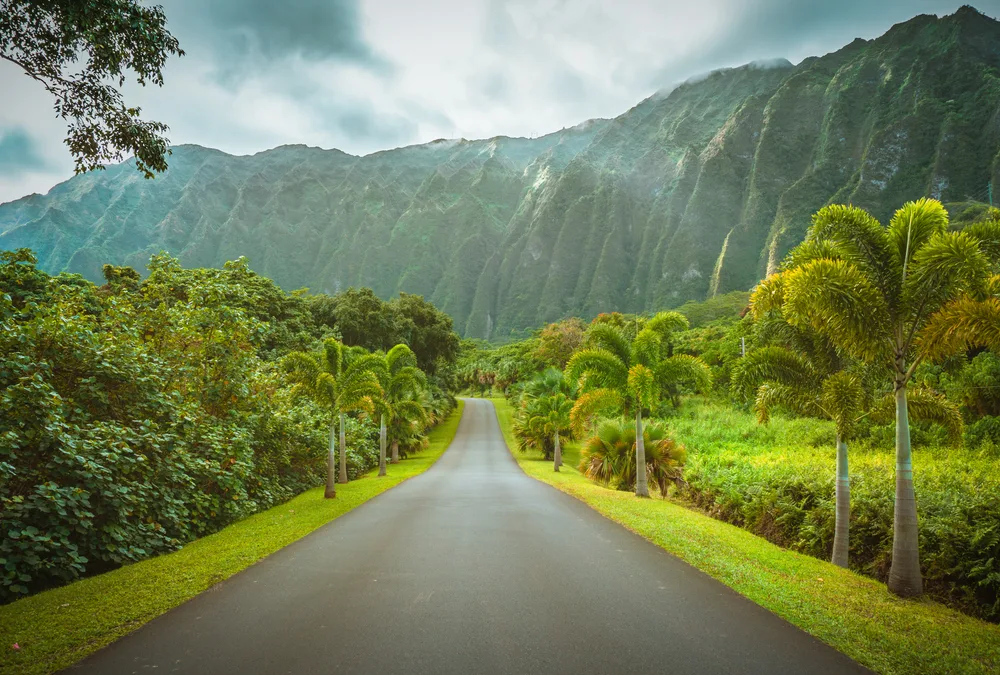
Cautron Live/Shutterstock
If you were wondering “What language do they speak in Hawaii,” you might find these additional facts and considerations helpful.
- Most Hawaiians speak Pidgin. Aside from English, Hawaiian Pidgin, or Hawaiian Creole, is what you’ll find most Hawaiians speaking on a daily basis in the islands. It uses a blend of Hawaiian, English, Spanish, Portuguese, Japanese, and Cantonese words to form an easily-understood language for speakers of any of the base languages.
- Learn Hawaiian words before traveling. You don’t have to know the Hawaiian language to travel here (many Hawaiians don’t speak it fluently, either) but it’s a good idea to learn a few words before you go. You can learn to speak Hawaiian once you understand how the vowels and consonants are pronounced along with a few basic words to get you started.
- Know that language varies by island. The most widely spoken languages in Hawaii vary by island, with certain languages being concentrated in the islands where their ancestors first immigrated. If you’re planning a trip to Hawaii, check above to see which languages are most commonly spoken on the island(s) you’ll be heading to!
- Immerse yourself in the Hawaiian language. The traditional Hawaiian language is now taught in immersion language schools that begin in Pre-Kindergarten. There are Hawaiian language TV stations (like ‘Ōiwi TV) that feature Hawaiian-language programming and workshops you can take to fully immerse yourself in this historic native tongue.
Frequently Asked Questions
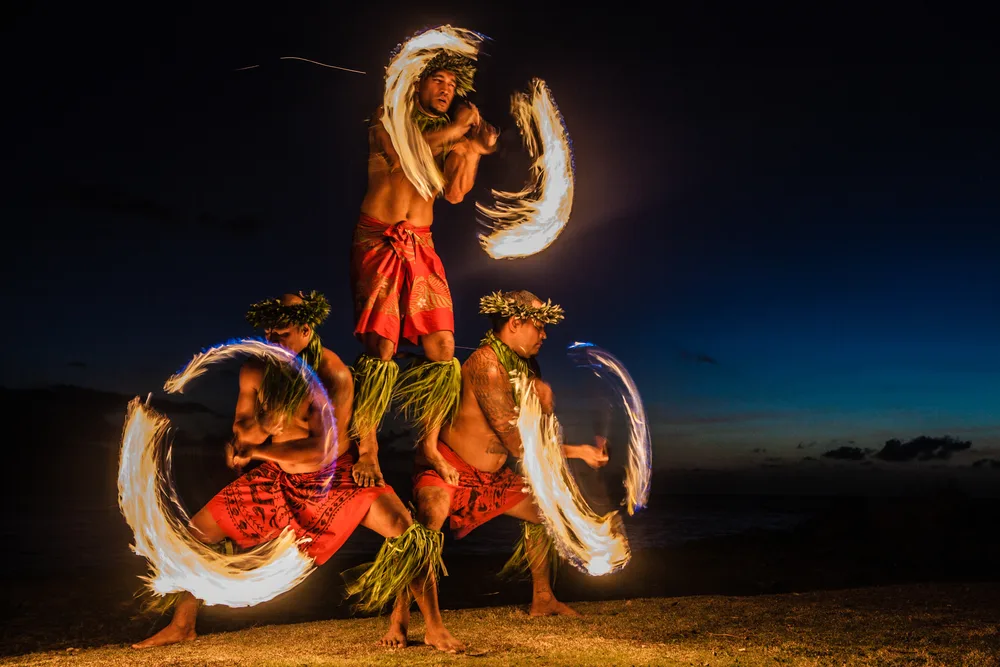
Deborah Kolb/Shutterstock
Lots of people wonder “What language do they speak in Hawaii?” but there are even more FAQs that might be on your mind. Check them out to learn more about the languages spoken in Hawaii!
What language is mostly spoken in Hawaii?
English is the language mostly spoken in Hawaii, closely followed by Hawaiian Pidgin or Hawaiian Creole English. Hawaiian Pidgin is a creole language based on English, Hawaiian, Japanese, Portuguese, and Cantonese languages. The English language is spoken fluently by 90% or more of Hawaiians, making it the most-spoken language in the archipelago.
Does Hawaii have their own language?
Yes, Hawaii has its own language. The Hawaiian language, Olele Hawai'i, has a long history of use across all Hawaiian islands. It’s based on the Polynesian language and is very similar to other Pacific Island languages like Samoan and Tongan.
Today, Hawaiian is one of Hawaii’s 2 official languages (English is the other) and is being used more than in the past.
Do Hawaiians actually speak Hawaiian?
Some Hawaiians do speak Hawaiian fluently, though only around 18,600 people (5.7% of the state’s population) say they speak it at home. It’s a much smaller number than other languages spoken in Hawaii like English, Hawaiian Creole, Tagalog, Ilocano, Japanese, and Spanish.
How do you say hello in Hawaii?
“Aloha” is how you say hello in Hawaii, but if you want to take it a step further and be more specific, try these phrases:
Aloha kakahiaka means “Hello, good morning.” Aloha 'auinalā means “Hello, good afternoon.” Aloha ahiahi means “Hello, good evening.” “Hui!” is an informal greeting like “hey,” usually used from afar.
Is aloha bye or hi?
Aloha is a universal salutation that can be a greeting or farewell, so it works for saying bye or hi. You can say “aloha” when you greet someone or when you’re leaving.
It’s a good Hawaiian word to know because it applies in so many situations!
So, What Language Do They Speak in Hawaii?
English is the most widely spoken language in Hawaii, followed by Hawaiian Pidgin or Hawaiian Creole, then Filipino Tagalog and Ilocano.
Japanese and Spanish are the 5th and 6th most-spoken languages in Hawaii, with the native Hawaiian language coming in 7th place.
We’ve explored the different reasons for the popularity and usage of these languages in Hawaii, from immigration and legislation to the resurgence of the Hawaiian language as people reclaim their cultural heritage.
So what language do they speak in Hawaii? You’ll probably hear a lot of English and Hawaiian Pidgin wherever you go, with more Tagalog, Ilocano, Japanese, Spanish, and true Hawaiian in some of the islands.



